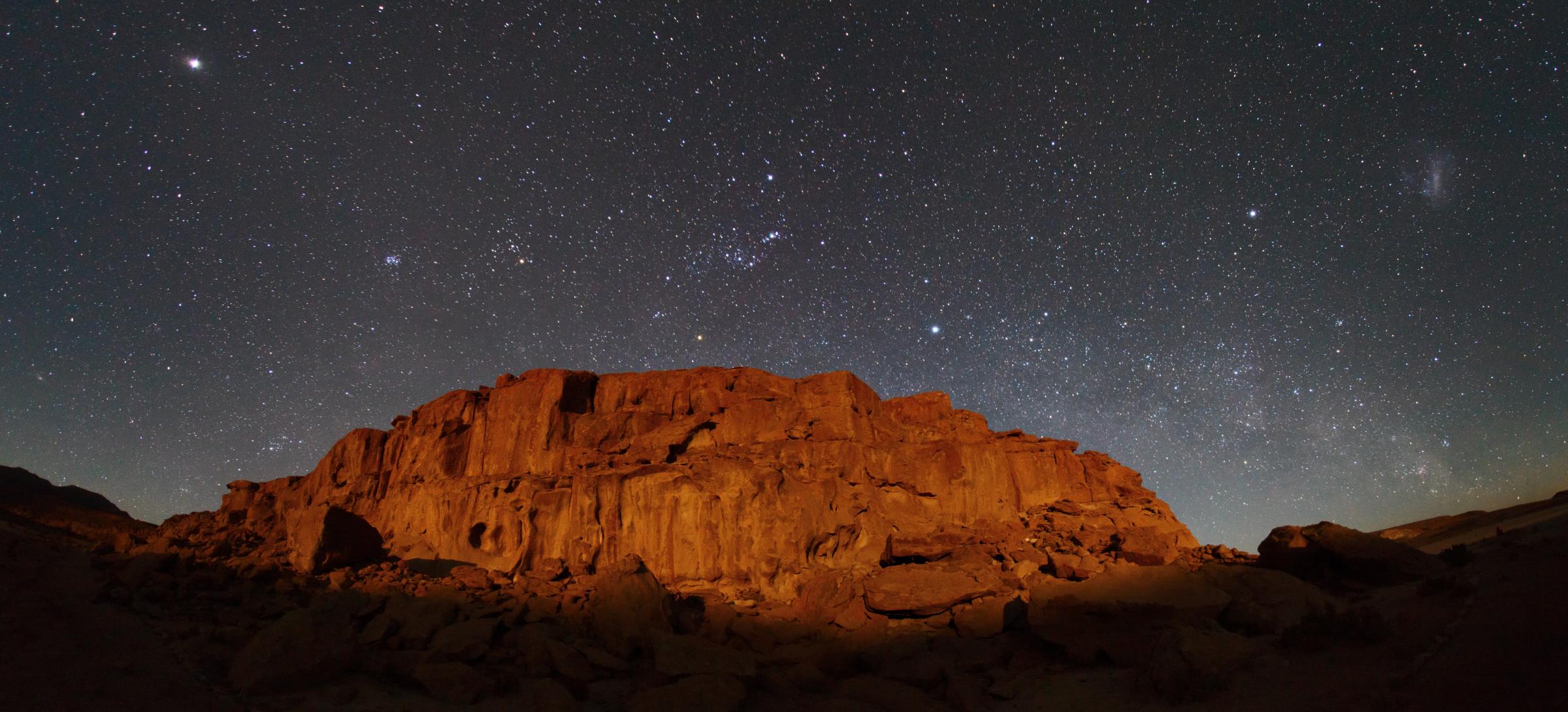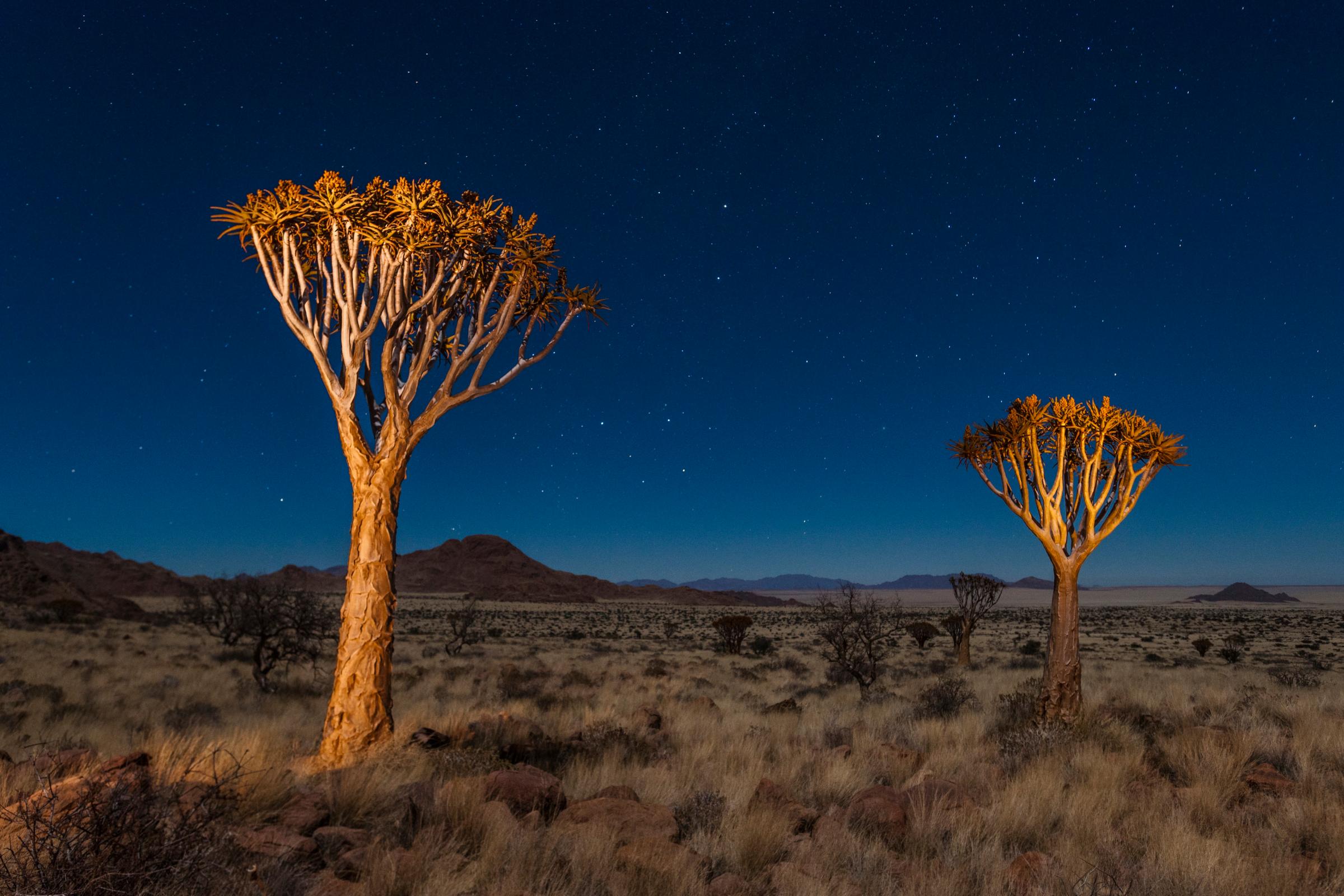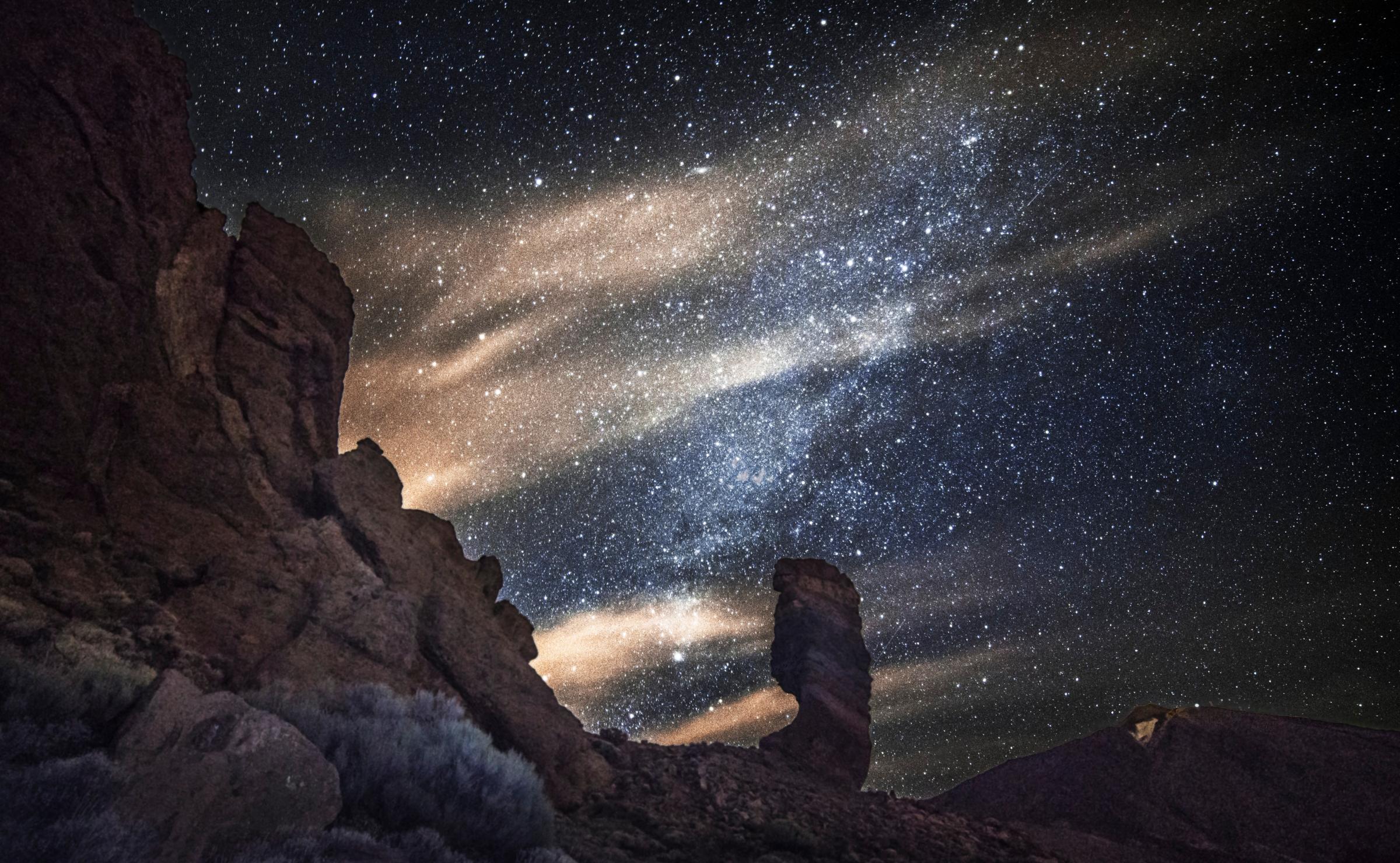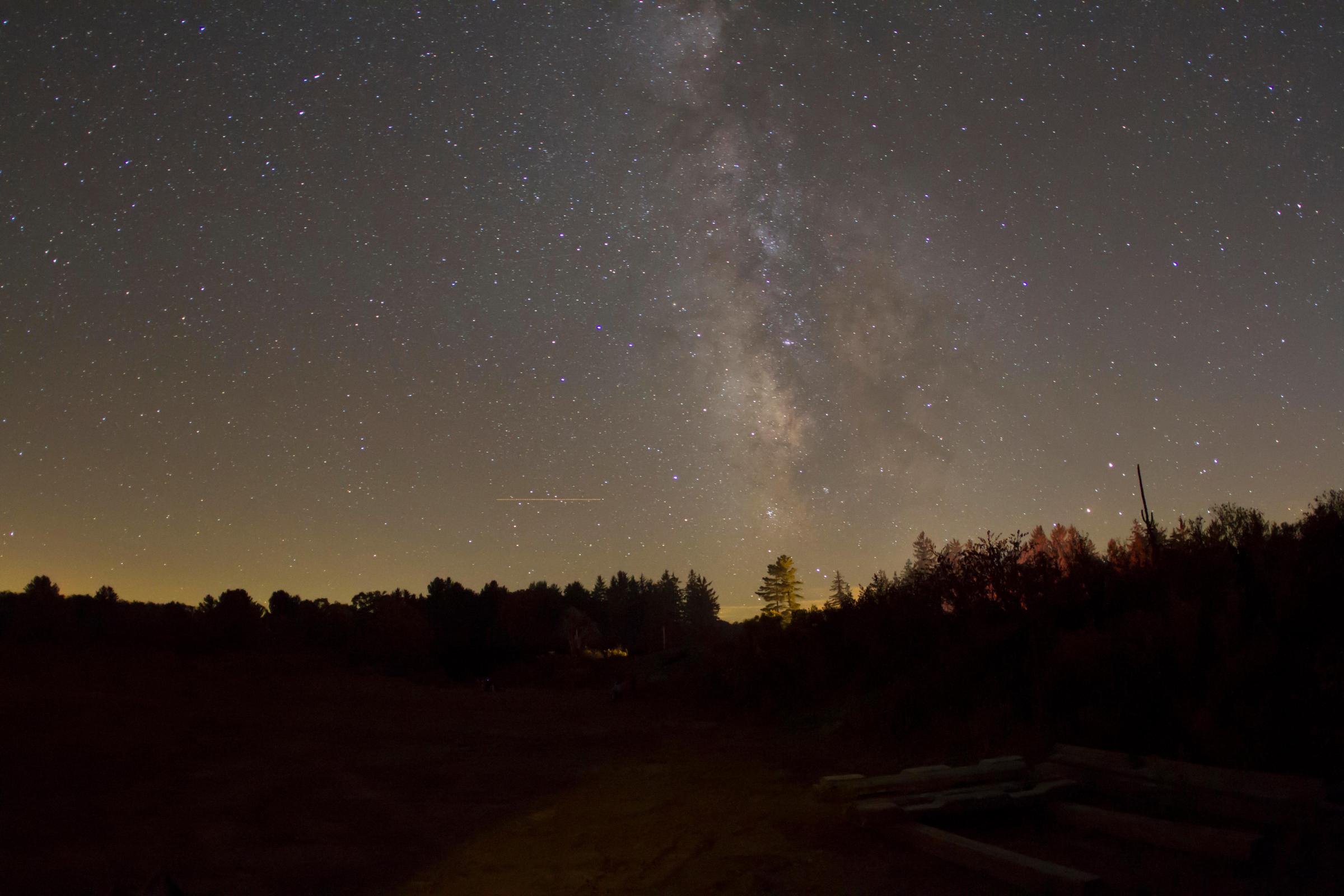The immensity of the universe is beautiful and humbling—the stars reminders of billions of lives spent, in astronomer Carl Sagan’s words, “on a mote of dust, suspended in a sunbeam.” But as our population grows, so too does light pollution, clouding the atmosphere and all that lies beyond it. Today, as few as 500 stars are visible from many urban areas.
But happily that’s just not the case for these dozen locales, where as many as 15,000 individual pinpricks of light can be seen with the naked eye. The catch? They’re not exactly convenient—but that’s kind of the point.
Attention astrologers and contemplators of the universe: these are the planet’s best spots for stargazing.
Atacama Desert in Chile

This 600-mile stretch of northern Chile boasts the trifecta for ideal stargazing conditions: high altitude, unpolluted skies, and the driest (non-polar) air on Earth. Unsurprisingly, the astro-tourism scene is booming. The ALMA Observatory, where the world’s most powerful radio telescope uses 66 satellite antennae to look into deep space, will be joined by a handful of other groundbreaking telescopes currently in development, while the dozen or so observatories currently scattered across the Elqui Valley draw hundreds of visitors a day. Elqui Domos, on the outskirts of the desert, offers a more personal experience: along with an observatory, the hotel features domed tents with open ceilings or timber cabins with glass roofs, which act as skylights to the world above.
NamibRand Nature Reserve in Namibia

When the International Dark-Sky Association (a group that recognizes places for their sky quality) formed in 1988, its first reserve to achieve Gold Tier status (the IDA’s highest award) was Namibia’s NamibRand Nature Reserve. in the arid Namib Desert and 60 miles from the closest village. Here visitors can camp out in the arid Namib Desert and take a guided tour of the dunes. There’s also Wolwedans, a camp complex whose Mountain View Suite includes a summertime ‘star-gazing’ bed on its main veranda.
Aoraki Mackenzie International Dark Sky Reserve in New Zealand

The world’s largest dark-sky reserve sits on a high country plateau in New Zealand called the Mackenzie Basin, which is ringed entirely by mountains on the country’s rugged South Island. On Earth & Sky’s nighttime tour of Mt. John Observatory, used by astronomers from Japan, Germany, and the U.S., visitors can spot the Magellanic Clouds—satellite galaxies of the Milky Way visible only from the southern hemisphere.
Kerry International Dark-Sky Reserve in Ireland
As far back as 6,000 years ago, the residents of Ireland’s Iveragh Peninsula, an area isolated on either side by the Kerry mountain range and vast Atlantic Ocean, used stone formations to track solar and lunar cycles. Locals are fiercely proud of their region, which, in 2011, became the only gold-tier dark-sky reserve in the northern hemisphere, and are hard at work developing a new public lighting system that is dark-sky compliant.
Mauna Kea in Hawaii

People making the two-hour drive to the gusty 13,796-foot summit of Mauna Kea, home to the world’s largest optical telescope, have high risk for altitude sickness, but serious sky-lovers brave the elements (and low oxygen levels) for some spectacular sunrises and sunsets. The peak closes to tourists come nightfall, but the visitor’s center (at a more manageable 9,200 feet) remains open until 10 p.m. There, guests are treated to free lectures, Q&As, and a chance to peer through 11-, 14-, and 16-inch telescopes.
Nova Scotia, Canada

In far eastern Canada’s Acadian Skies and Mi’kmaq Lands, a swath of wilderness in undeveloped western Nova Scotia, you’ll find the world’s first certified Starlight Hotel: Trout Point Lodge. The area was once the home of the indigenous Mi’kmaq nation, whose stories about constellations explained the changing of the seasons and other universal phenomena. Today, a resident astronomer leads guided star walks through the grounds as well as sessions on the lodge’s new stargazing platform.
Tenerife on the Canary Islands

With its high altitude, proximity to the Equator, and distance from tropical storms, the remote Canary Islands off mainland Morocco enjoy some of the clearest, darkest skies. What’s more, Tenerife, the largest island, passed a law that controls flight paths in order to protect its stargazing conditions. It’s also the host of the semi-annual Starmus Festival, a celebration of science, music, and the arts. Festival attendees, which have included Neil Armstrong and Stephen Hawking, enjoy lectures, screenings, and space-themed parties. Until the next gathering, visitors can tour the Teide Observatory (open April through December) or take a cable car to the top of volcanic Mount Teide for dinnertime stargazing.
Jasper National Park in Canada

The roads to Alberta’s Jasper National Park wend their way through spruce and pine forests, ultimately giving way to the majestic Canadian Rockies. At night, the views only get better. Much hype has been built around Jasper’s annual Dark Sky Festival, which schedules daytime solar viewings, rocket launches for kids, and telescope workshops. If you can’t pass through in October, however, spring for roadside—or backcountry, if you’re truly adventurous—camping at the more than 100 sites scattered throughout the preserve, which are open year-round.
Cherry Springs State Park in Pennsylvania

Pennsylvania may not seem so far-flung, but in 2014, the northern lights—phenomena usually only witnessed in high-latitude regions—were spotted a whopping four times in the 82-acre Cherry Springs State Park. This year, aspiring astronomers are gearing up for the park’s annual Black Forest Star Party (September 11-13), which brings together hundreds of amateur observers for a weekend of communal stargazing.
Galloway Forest Park in Scotland

It’s said that more than 7,000 stars and distant planets can be seen just with the naked eye from southwest Scotland’s 185,000-acre Galloway Forest Park, the first Dark Sky Park in the U.K. One of its three visitors’ centers overlooks Clatteringshaws Loch and the forest’s unlit center—providing ideal night conditions for gazing skyward. Or, for a more formal evening, sign up for lectures by guest speakers and evening viewings at the Scottish Dark Sky Observatory, on the park’s southern edge.
Hovenweep National Monument in Utah and Colorado
It’s speculated that several of the prehistoric buildings in the deserts of Hovenweep (the barren canyons and mesas straddling the border of Utah and Colorado) were designed in accordance with major celestial events including the summer solstice. Why they were built or how they were used remains a mystery.
Uluru-Kata Tjuta National Park in Australia
Visiting Uluru (formerly Ayers Rock) and Kata-Tjuta, the two 600-million-year-old monoliths in the middle of Australia’s Red Center, are quintessential bucket-list experiences, and it’s easy to see why: as night falls, the Milky Way, with its rainbow hues, is clearly visible. Secluded lookout points are scattered throughout the nearby Ayers Rock Resort (we suggest the one behind Outback Pioneer Lodge), where you can spot the Southern Cross and—if you’re lucky—the aurora australis.
More from Travel + Leisure:
More Must-Reads from TIME
- Donald Trump Is TIME's 2024 Person of the Year
- Why We Chose Trump as Person of the Year
- Is Intermittent Fasting Good or Bad for You?
- The 100 Must-Read Books of 2024
- The 20 Best Christmas TV Episodes
- Column: If Optimism Feels Ridiculous Now, Try Hope
- The Future of Climate Action Is Trade Policy
- Merle Bombardieri Is Helping People Make the Baby Decision
Contact us at letters@time.com